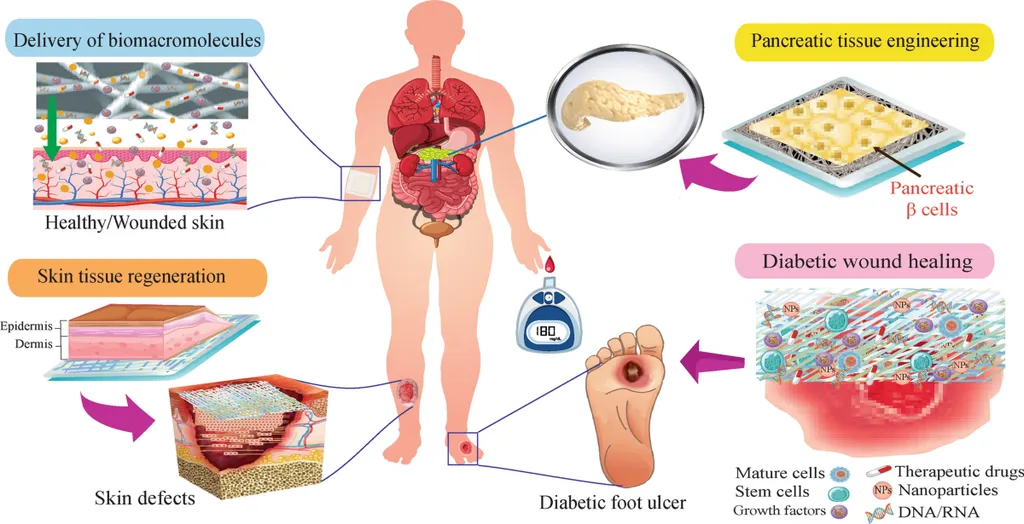In the relentless pursuit of advanced wound care solutions, a team of researchers led by Huijun Yang from the Endocrinology Department at The Affiliated Hospital of Yunnan University in Kunming, China, has made a significant breakthrough. Their study, published in the Journal of Engineered Fibers and Fabrics (translated as “Journal of Engineered Fibers and Textiles”), introduces a novel approach to diabetic wound healing using nanofibrous dressings loaded with 3-hydroxyanthranilic acid (3HA). This research not only addresses a critical healthcare challenge but also holds promising implications for the commercial sector, particularly in the development of advanced wound care products.
Diabetic wounds are notoriously difficult to treat due to prolonged inflammation and impaired healing caused by an overproduction of reactive oxygen species (ROS). These reactive molecules damage cellular components and the extracellular matrix, delaying tissue regeneration. The research team aimed to mitigate ROS at the wound site by incorporating 3HA, a known antioxidant, into polyvinyl alcohol (PVA) electrospun scaffolds. “We hypothesized that by addressing oxidative stress in the wound microenvironment, we could improve healing outcomes,” said Huijun Yang, the lead author of the study.
The team created scaffolds with varying concentrations of 3HA (0.5%, 1%, and 1.5% w/w) and characterized them for fiber morphology and diameter. The incorporation of 3HA did not significantly alter the nanofiber morphology, ensuring the structural integrity of the scaffolds. Among all formulations, the scaffold with 1% 3HA demonstrated the highest cell viability under oxidative stress, indicating its potential as an effective wound dressing.
In vivo wound healing studies using a streptozotocin-induced diabetic rat model revealed that wounds treated with PVA/1% 3HA closed more rapidly compared to the PVA-only and untreated control groups. Gene expression analysis showed reduced levels of Interleukin-1 beta (IL-1β) and glutathione peroxidase, while basic fibroblast growth factor (b-FGF) expression was significantly upregulated in the treated group. “The PVA/1% 3HA scaffold effectively enhanced diabetic wound healing by reducing oxidative stress and inflammation while promoting tissue regeneration,” explained Yang.
The commercial implications of this research are substantial. Diabetic wounds represent a significant burden on healthcare systems worldwide, and the development of advanced wound care products that can accelerate healing and reduce complications is of great interest to the medical and commercial sectors. The PVA/1% 3HA scaffold offers a promising solution that could be further developed into a market-ready product, potentially revolutionizing diabetic wound management.
This study not only highlights the potential of 3HA-loaded PVA scaffolds as a bioactive dressing for diabetic wound management but also paves the way for future research into the use of antioxidants and immunomodulatory agents in wound care. As the field of regenerative medicine continues to evolve, such innovative approaches could lead to the development of more effective and targeted therapies for various types of wounds and chronic conditions.
The research was published in the Journal of Engineered Fibers and Fabrics, a prominent publication in the field of textile and fiber engineering, underscoring the interdisciplinary nature of this groundbreaking work. As the scientific community continues to explore the potential of advanced materials and biotechnology in healthcare, studies like this one will undoubtedly shape the future of wound care and regenerative medicine.

